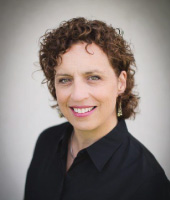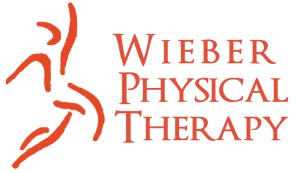
Michelle Wieber was recently interviewed for an article in Impact Magazine, the magazine of the American Physical Therapy Association Private Practice Section. It is a great honor and high recognition to be chosen as one of the Impact feature articles. The article about Wieber Physical Therapy came out this month, and can be read below or at ppsimpact.org. We hope you all enjoy reading about Michelle’s views on starting a practice, serving a diverse patient population, and the lessons she has learned as an owner.
Michelle Schulte-Wieber, PT, and her husband Dave Wieber, PT, founded Wieber Physical Therapy in Faribault, Minnesota, in 1997. They currently employ eight PTs, most of whom work at the main clinic in Faribault, and they also staff a satellite clinic for musicians at St. Olaf College in Northfield, Minnesota. Michelle may be reached at michelle@wieberphysicaltherapy.com.
Michelle, Wieber Physical Therapy is not the first PT-owned business you have worked with. What was the path that brought you here, and what have you learned that could help a PT wanting to open in a town similar to Faribault?
I graduated from the Ohio State University physical therapy program in 1990, and like many PTs I then worked in both outpatient offices and hospital settings, and I had a unique opportunity helping start the physical therapist assistant program in Albert Lea, Minnesota, as well as earning my athletic training certification. During this time my husband opened a niche, cash-based golf practice. In 1997 my husband and I decided to open our own practice in Faribault, population about 25,000, located 50 miles south of Minneapolis-St. Paul. While being fairly rural, Faribault is home to the Minnesota State Academy for the Deaf and the Minnesota State Academy for the Blind as well as has several light manufacturing industries. These industries attract a diverse workforce to Faribault, with the two most common being from Central America and Somalia.
Our goal was and is to provide excellent care across the broad spectrum of our community and remain financially viable. To achieve this we use a mix of skills—the best manual therapy skills for the spine and extremities—and we have developed areas of expertise in vestibular rehabilitation, women’s health, concussion care, sport performance, dry needling, LSVT BIG Program for Parkinson’s care, hand therapy and post-offer/pre-employment testing, and we also offer direct onsite industrial consulting and teaching programs.
If I were to start over, I would have sought business mentorship much sooner than I did (18 years into my practice!). This would have helped with our decision about building a building or not, which we did, and it was a good decision. And may have helped us avoid a bad decision—partnering with the wrong people. It would have been very helpful to have a mentor guiding me on the laws regarding working with clients with disabilities, as well as providing insight into cultural considerations with our patient populations. And then of course there are always the complexities of the insurance industry.
Tell me more about what you have learned working with your varied patient population.
It starts with that first clinic contact—the phone call—and then continues to the intake paperwork, insurance process, and then PT care. We needed to be accessible to the hearing and vision impaired as well as to patients with limited proficiency in English. And to be sensitive that our patients may not know how their private or injured workers’ insurance works.
For example, we were familiar with generalities of the Americans with Disabilities Act (ADA), but we lacked insight into the uniqueness of the deaf culture, as well as the cost of providing sign language interpreters for our deaf patients. These patients generally have infrastructure available to assist with phone calls and paperwork, but we needed to be familiar with these processes. And I learned that the cost of the interpreter is often more than the reimbursement for the visit. As movement specialists treating visually impaired clients, we realized how much we rely on the visual demonstration of exercise and body mechanics, and it is a rewarding challenge learning to instruct primarily verbally. And we are repeatedly impressed by the amazing facial expressions of our deaf patients—it is part of American Sign Language.
In addition to considering if your intake forms are understood by your patients, it may be helpful to ask yourself, “What questions are not on our intake forms?” Examples include: Does the patient understand the financial policy? If the patient was not told any details of medical procedures they had received in another country, how can they provide you with accurate and perhaps needed information to provide care? How can they tell you of sexual assault if you do not ask? And if these items [not included on the intake forms] have led to globalized pain patterns, how and where do we begin to address them? These are just a few of the things we continue to discuss. The concept of cultural competency generally begins with getting to know your community, planting the seeds with your staff regarding diversity, looking at your intake forms, and then deciding how to market to the variety of needs culturally.
As to our marketing, over the years we have realized that particularly our Hispanic and Somalia patients do not seek needed or recommended care, and we have looked at our outreach to these communities, including hiring staff who are multilingual when possible. And we have learned small things that no one told us that have improved our arrival rate—be familiar with the prayer times and the holidays of the cultural groups in your community—this will likely decrease your no show rate.
Our niche clinic working with musicians on the St. Olaf College campus has been a crash course in working with the mix of national payers, as the student musicians are most often covered by their parents’ insurance from whichever state the student is from. We have been greatly assisted by a local PT-owned management service organization which manages our insurance contract negotiations. We love working with the musicians, and this allows us to focus our energies on them rather than insurance guidelines.
What is your next step and how do you measure success?
My goal is to approach every day with integrity, and to create a place which supports the goals of my staff and our patients. Once a year we close the clinic for a half-day, all-staff retreat. These have been great to stimulate conversations regarding personal and clinic goals. One of our physical therapists and all of our occupational therapists are now certified yoga instructors, blending this approach with their therapies, and another therapist has pursued specialization as a pain specialist. In addition, once a year the staff reads and then discusses a book, usually related to customer service and care. This gives us a common language and culture, and we work on process improvements toward goals. We don’t work on fixing each other. We work on processes, and we record the things we do well for our patients and for each other. In addition, we have started using a four-point balanced scorecard, which helps us look at: employee engagement, patient engagement, clinical excellence, and financial success by meeting benchmarks for productivity.
For those starting their own practice I would say that to own a business you have to have grit and to be willing to invest your time and energy into those you employ at all levels. You also have to be agile. You have to recognize that when you start a practice, you really are adding a family member—it is always on your mind. You are fortunate to be in a profession that helps people, and there will always be a need for this. Our state chapter, national organization, and the Private Practice Section are a wealth of resources regarding clinical care, marketing, and business management so don’t be shy about using them. And remember to also care for yourself and enjoy your free time as I do with my family and in my garden and hiking, biking, and swing dancing.
Original article from ppsimpact.org

Leave a Reply
You must be logged in to post a comment.